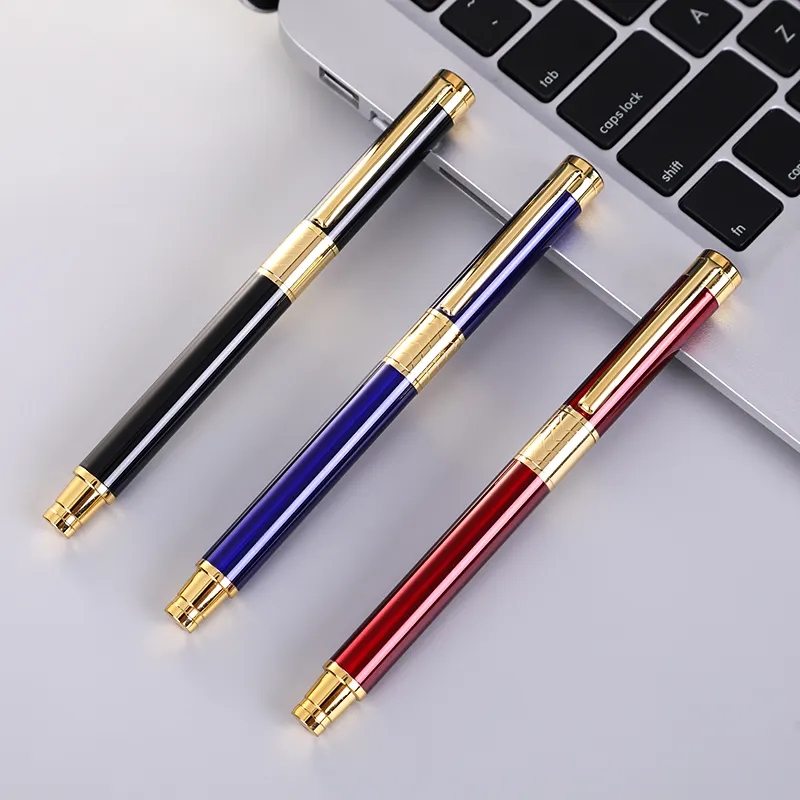In an era dominated by keyboards and touchscreens, there exists a symbol of timeless elegance and refinement—the Fountain Pen. This classic writing instrument has a rich history, intricate design, and a dedicated following among those who appreciate the art of fine writing. In this article, we’ll embark on a journey to explore the world of the Fountain Pen, delving into its historical significance, intricate mechanics, versatile applications, and essential considerations for choosing the perfect one.
1. Uncovering the Historical Significance of the Fountain Pen
The origins of the Fountain Pen can be traced back to ancient civilizations, where early prototypes emerged. However, it was in the 17th century that the concept began to take form. Over the centuries, inventors and craftsmen contributed to its evolution, leading to significant advancements in the 19th century. Innovations by individuals such as Petrache Poenaru and John Jacob Parker laid the foundation for the modern Fountain Pen. Lewis Waterman’s breakthrough in the late 19th century, which solved the issue of ink flow, marked a turning point in its history. Since then, the Fountain Pen has been a symbol of sophistication and craftsmanship.
2. Revealing the Intricate Mechanics of the Fountain Pen
The Fountain Pen is a marvel of design and engineering, consisting of several intricate components:
Nib: Often made from materials like stainless steel or gold, the nib is the heart of the Fountain Pen. It determines the pen’s writing style, line thickness, and character, making it a crucial element in the writing experience.
Ink Reservoir: Unlike other types of pens, Fountain Pens feature a refillable ink reservoir, typically located within the pen barrel. This reservoir allows for a smooth and continuous flow of ink, ensuring uninterrupted writing.
Feed Mechanism: The feed mechanism controls the flow of ink from the reservoir to the nib, ensuring consistent and controlled writing.
Cap: Beyond its protective function, the cap adds to the pen’s aesthetics and often carries the emblem of the brand, highlighting its heritage and craftsmanship.
3. The Versatile Applications of the Fountain Pen
Fountain Pens serve as more than just writing tools; they are instruments of expression and sophistication. Their applications are diverse and include:
Professional: Fountain Pens are highly esteemed in formal and business settings for signing important documents, crafting handwritten correspondences, and projecting professionalism and attention to detail.
Artistic: Artists, illustrators, and calligraphers favor Fountain Pens for their ability to create expressive lines and nuanced strokes, making them ideal for sketching, drawing, and intricate artwork.
Personal: Many individuals turn to Fountain Pens for personal journaling, reflection, and capturing the essence of their thoughts and experiences, adding a touch of elegance to their personal writings.
Gifting: Fountain Pens are cherished as thoughtful gifts, symbolizing the enduring value of the written word and the art of communication.
4. Key Considerations for Choosing the Perfect Fountain Pen
Selecting the right Fountain Pen is a highly personal endeavor. Here are some essential factors to consider:
Nib Type: Choose a nib size (fine, medium, or broad) that suits your writing style and preferences.
Ink Compatibility: Fountain Pens can accommodate various types of ink, including bottled ink and ink cartridges. Consider your preferred ink type and refilling method.
Materials and Aesthetics: Fountain Pens come in a wide range of materials, from classic resin to luxurious metals and exotic woods. Select one that resonates with your personal style and aesthetics.
Budget: Fountain Pens are available at various price points, from affordable options to high-end collector’s pieces. Determine a budget that aligns with your preferences.
In conclusion, the Fountain Pen remains a timeless symbol of elegance, craftsmanship, and the art of fine writing. With a history rooted in tradition, intricate mechanics, and diverse applications, it continues to captivate those who appreciate the beauty of the written word. By understanding its components and considering your personal preferences, you can select the perfect Fountain Pen to elevate your writing experience and make a statement of enduring elegance and individuality.



